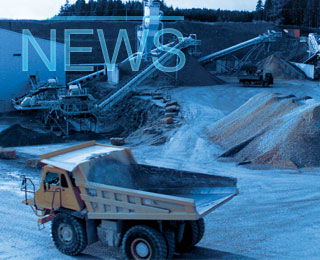The good times are here for the cement sector. There is already a strong surge in demand, coupled with robust prices - and the industry expects finance minister P Chidambaram’s budget to provide the next big push that will boost infrastructure, which is expected to further pep up demand (reports The Times of India).
Industry insiders say that the demand upsurge, which has been particularly strong since late last year, is largely a result of robust housing demand, with little contribution from infrastructure projects. Manufacturers say that infrastructure demand has not improved much, and the sector is waiting for more steps towards infrastructure development. "Infrastructure demand today is not worth talking about," says Gujarat Ambuja Cement’s executive director Anil Singhvi.
During April-January ’04-05, industry dispatches, including exports, have risen by 7.5 per cent to 102.6Mt up from 95.6Mt during the corresponding period of the last fiscal. Volumes had recorded a modest 5.5 per cent growth last fiscal. ACC executive director AK Jain says, "We are hopeful that infrastructure demand will pick up. We expect the Union budget to give a big push to infrastructure development." With no new manufacturing facilities in sight, the surge in demand has had a positive impact on prices. Average realisations for cement firms have risen by nearly 10 per cent year-on-year.
In recent years, the industry has highlighted the fact that cement is among the highest-taxed sectors, with the taxes comprising around a third of the selling price. However, this argument did not cut ice with the finance minister. The last time around, Mr Chidambaram’s interim budget hiked the duty on cement from Rs 350 per tonne to Rs 400 per tonne. According to Martin Kriegner, CEO, Lafarge India: "Cement is among the highest-taxed products in India, with excise duty in the range of 33% of ex-factory realisations. This does not compare well with other building products like steel and even luxury goods like digital cameras and cosmetics, which have excise duty in the range of 16 per cent. The government has been working on demand-side improvement, and a reduction in excise duty will propel overall consumption levels."
Industry insiders say the sector has been hit by the shortage of coal and the resultant spurt in prices. Coal, a critical input for the sector, accounts for 15 per cent of cement manufacturers’ total cost, and manufacturers want the government to come up with measures to ease the demand-supply situation. Imported coal currently attracts a 15 per cent levy, and the industry would like to see duty rates slashed to 5%. "Coal prices are ruling at very high levels. We would expect the next budget to bring down customs duty on coal," says Mr Jain.
Also, on the cement industry wish-list is the demand that the government encourage production of blended cements, which play an important part in environmental protection. "Fly ash disposal is and will continue to be a problem for the country, causing degradation of the environment. The cement industry, which is a major consumer of fly ash, should be incentivised for production of blended cements," Mr Kreigner added.
